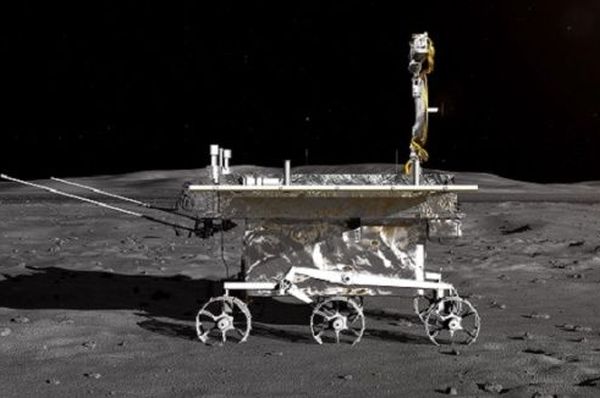
The Chang’e-4 probe was launched by a Long March-3B carrier rocket on December 8th
China’s Chang’e-4 probe successfully completed the first landing on the side of the moon which faces away from the Earth. State television transmitted the first-ever “close range” image of this historic event, Thursday.
The lunar landing took place in the Aitken Basin, at the south pole of the Moon’s satellite, Global Times reported, calling it a “great milestone in space exploration.”
Since the moon rotates at the same rate that it orbits our planet, the far side is never visible from Earth. More than 100 spacecraft and probes have been launched onto the moon since the 1950s, but none have made a soft landing on the moon’s dark side.
The Chang’e-4 probe, which includes a landing module and a mobile vehicle, was launched by a Long March-3B carrier rocket on Dec. 8 from the Xichang Satellite Launch Center in Sichuan Province.
The Chinese probe’s tasks include astronomical observation, surveying the moon’s terrain, landform and mineral composition, and measuring the neutron radiation and neutral atoms to study the environment on the far side of the moon, the China National Space Administration said.
Besides carrying silkworm eggs, the Chinese probe transported a small container with potato seeds and mustard seeds, with the aim of growing them on the Moon, according to Xinhua.
The evolution of the biological material will be recorded on video in order to be controlled from Earth.
The Chang’e-4 probe, which is named after the Chinese goddess of the Moon, is part of China’s lunar exploration project, that was initiated in 2004 and seeks to achieve manned moon landings and to establish a moon base.
Lunar probes from Chang’e-1 to Chang’e-4 are the first phase of such project.
China aims to become a major space power by 2030 and is currently planning to build its own manned space station next year.
 Escambray ENGLISH EDITION
Escambray ENGLISH EDITION





Escambray reserves the right to publish comments.